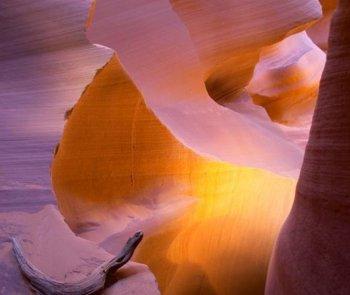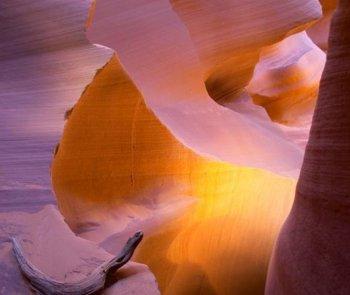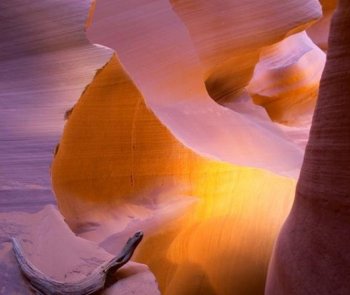To the question of how many photographers there are, Wiki.answers.com responds, “As many as stars in the sky!!! But only a few are professional photographers who can capture quality photos.”
And that is becoming a major hurdle for professional photography, according to Scott Frances, an accomplished photographer of architecture and design, who was recently interviewed by The Epoch Times.
When it is said that competition is good for consumers, is it really? What does it imply?
These days adequate labor is expensive. Obtaining or having experience is expensive. Investing in proper tools and equipment is expensive. Being legit is expensive. All of the above produces quality, so quality is ... yes, you got it: Quality is expensive.
Take faux painting of interiors for example. A few years back, it was a craft of a few who charged a pretty penny to glaze walls in lavish mansions. Quality was there for the affluent.
Then competition came in and changed that formula with do-it-yourself books, which were adopted by some paint companies. They sold specialty brushes, odd-looking tools, and ready-made glaze mixes with brochures that explained how to use those odd tools, visually instructing readers on how it’s done.
How many blotched, uneven, grotesque paint jobs had to be redone by professional faux painters who were called by hysterical homeowners afterward? I’m not sure if there are any statistics, but the number of unhappy homeowners also may have reached the number of the stars!
And if these blotchy walls were accepted as up to par, well ... then the overall standards of beauty were lowered as a whole. Competition is fed by budgets. Budgeting affects integrity, and lack of integrity affects quality. Is lack of quality good for the consumer?
According to Frances, “There is a lot of pressure of this economy. It has been going on for a long time, and there are more and more and more photographers coming along.
“There is a huge amount of competition coming from the bottom, and there is a usual amount of pressure from the top for prices ... and there is a great sacrifice of quality these days,” Frances said.
He added, “People don’t care if it’s great, so you see some terrible terrible photography out there. There is less interest these days in great quality.”
To the question of what protects the artists and their integrity, Frances replied, “Photography, it’s sort of a lone-wolf business, where it’s just a bunch of people running their own businesses not knowing what the other one is doing, [not] getting together, and [not] agreeing that, look, we are not going to give this away anymore.
“A lot of young people call me coming out of school. There are a lot of schools pumping out tens of thousands of photography students every year. I keep my door open, I like to give advice. Sadly, I often find myself having to say that this is a tough situation. It’s a very very difficult business, a very difficult business model, and it is getting worse and worse.”
Frances compared the situation with girls wanting to become models: “The problem is that, look, it’s an attractive field, it’s like how many girls are to grow up and become a model, how many girls are really going to be models? Not that many.
“Usually for girls who want to be models, they find out pretty quickly that it’s not going to happen, but for people who are coming out as photographers, they are spending a lot of money on education, they are spending a lot of money on equipment, they are spending many years assisting. So by the time they are 30 or 35, they are fully invested, and it’s probably not going to happen. And that’s a tough thing because where do you go from there?”
Some reach 35 years old, and it seems as if their dreams are coming true. Frances said that those may say, “Let’s give it a few more years.”
He continued: “The next thing you know you are 40. You have no resume. The road is littered with road kill. Hardly anyone actually gets his career off the ground. What happens? A lot of them go to other aspects of the industry: retouching, photo editors, other peripheral things.” At least they stay in the industry, Frances commented.
Analyzing the Problem
Alain Briot, an accomplished landscape and nature photographer, states on his website, “When it comes to developing a personal style what matters most is finding out who we are, what we like and dislike and what we want to do with the time we can devote to our chosen medium.”
Briot came to understand the lack of the search for self-awareness during his schooling years of studying photography in France,
“During the discussions we had as students we forgot one crucial element: ourselves. We focused on others, on the Masters, on the recognized, the accepted, the artists whose work was collected by museums. What we needed to do was focus on ourselves. We needed to think about what motivated us to study the arts, be it painting, drawing, or photography,” Briot writes on his website.
David Brommer, an experienced professional photographer who runs the free event space at B&H, the famous store for photography equipment in Manhattan, said similar things during a class on finding your personal style.
Next...Brommer has his students asked themsevles why they want to be a photographer
Brommer recommends looking within to find fears about what others will think of your work and how they will perceive you, your attachment to perfection, and your expectations. He recommends facing your fears and answering those questions.
Frances said, “It is very hard for me to recommend to people to become a photographer.” But he also added, “I do believe that you need to pursue your passion. You are only going to be good at something you love. And you are only going to be happy if you do something you love. So I think you got to try.”
Specializing
At B&H, Brommer recommends that you find your genre and stick with it, becoming an expert in it. He gave a long list of photography genres: journalism, nature, wedding, street photography, wildlife, landscape, cityscape, fashion, lifestyle, aerial, high dynamic range (HDR), still life, panorama, underwater, sports, macro, and vernacular, to name a few.
About his photograph “Driftwood and Glowing Sandstone, Antelope Canyon,” Briot wrote, “I love returning to the same locations time and over again to create images different from all those I previously created.” He added, “I had not seen the light effect shown on this photograph prior to that day and had not tried this composition either.”
Frances also emphasized the need to specialize and recommended aspiring photographers “find what else you are passionate about. Is it rock and roll, is it hiking, is it surfing? And combine those two!”
Frances explained that in photography nobody hires a generalist anymore. “There are so many people doing it, there is so much competition that the art buyer out there is going to say, ‘I am going to find a surfer photographer.’ He is not going to hire me to shoot a surfer.”
Frances said that even within one field there is specialization. “It’s so segmented that even in my field, one is to be great in shooting architecture or great at shooting interiors, or does great night shots.
“It is sad, in a way, because no one wants to be pigeonholed. But if you don’t have an identifiable style, there are buyers out there—the magazine art directors, the advertising agencies—they are just not going to think of you for when that job comes along,” he said.
When asked for permission to have his photograph published with this article, Briot wrote in an email to The Epoch Times: “The number of photographers is staggering. You may also want to mention the number of cameras sold worldwide, especially DSLRs (Digital Single Lens Reflex, which are cameras used by most pro photographers). In 2009, 9.9 million DSLRs were sold worldwide. In 2010, 11 million.”
He added, “The total camera sales, worldwide, for all camera types (DSLRs, digicams, etc.) was 106 million in 2009 and 110 million in 2010.”
If becoming a professional photographer is your dream, you may ask yourself, “Do I really want to become one of the 169,500 photographers by 2018?” At least, take note of pros’ advice before you decide!
The exhibit MonoVisioN, with images by Scott Frances, is on view until Aug. 19 at the D&D Building, 222 East 59th St., Manhattan, N.Y. See more images at www.scottfrances.com. Find the book “MonoVisioN” at www.pondpress.com and prints at www.vh-artists.com.
See Alain Briot’s photography at www.luminous-landscape.com.






